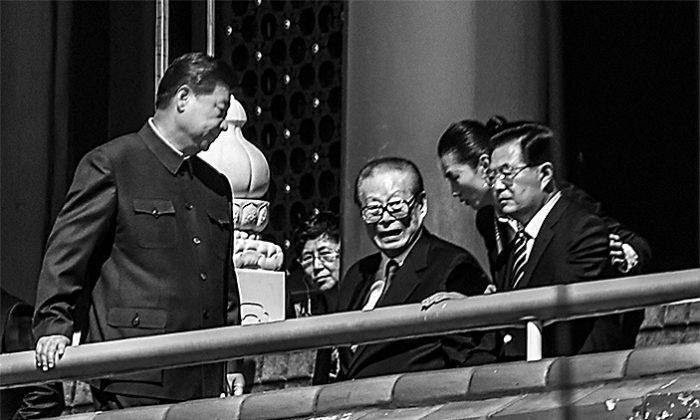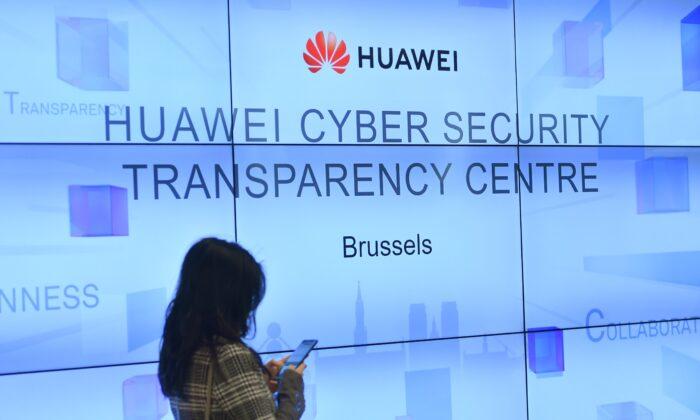But the project is likely to fail and is going to be an investment failure.
On Sept. 29, 2017, the regime’s mouthpiece Xinhua highly praised the official opening of the “Beijing-Shanghai Link”—a quantum secured communication fiber-optic link that connected Beijing and Shanghai. Pan Jianwei, the project’s leader and China’s top quantum physicist, indicated that this quantum link would serve as the backbone connecting quantum networks in four cities: Beijing; Shanghai; Jinan, Shandong Province; and Hefei, Anhui Province, the report said.
QuantumCTek, formerly known as Anhui Quantum Communications, is considered the leader of China’s quantum technology industry. Its website claims that the company “integrates production, education, and research.” QuantumCTek’s top three shareholders are the University of Science and Technology of China (USTC), with an 18 percent stake; Pan Jianwei, a quantum physicist affiliated with USTC, who owns about 11 percent; and the Chinese Academy of Sciences, which is an indirect shareholder through the Chinese Academy of Sciences Holdings Co. USTC is under the direct leadership of the Chinese Academy of Sciences.
However, Xu Lingyu, a columnist for the Guancha Syndicate and a retired researcher of the UCLA Department of Physics, pointed out that this new technology hasn’t created much interest, use, or profit in China and is bound to be abandoned soon.
“The Beijing-Shanghai Quantum Communication Link has been ignored by the media,“ Xu said in an article titled ”The Reasons and Truths of the Quantum Communication Project Coming Down From the Altar.”
“Multiple inter-provincial quantum communication links originally planned have been suspended. The media has never reported about any customers using quantum secure communication technology in online transfers and payments. A product without enthusiastic users and stable profit will end up being abandoned by the market at any time.”
In other words, in the closing year of the 13th Five-Year Plan, the quantum communication project that the CCP has been promoting is set to become a market outcast sooner or later. And yet, QuantumCTek managed to be successfully listed as China’s “first quantum technology stock.”
But there’s some fine print in the company’s prospectus that’s easily overlooked. It reads: “The company’s core technology research and development is not connected with the University of Science and Technology of China or Pan Jianwei.”
Public information reveals that QuantumCTek’s top five customers fall into the political and military categories of government affairs, finance, power, and national defense. In 2017, 2018, and 2019, these top five customers accounted for 82.87 percent, 73.59 percent, and 80.75 percent, respectively, of the firm’s revenues. This data shows two things: QuantumCTek faces the risk of being controlled by large, centralized customers, and its quantum communication products and equipment are mainly supplied to the government, state-owned enterprises, and the military.
When QuantumCTek was publicly listed, the company’s executives said that they would accelerate market expansion and commercial application, and would develop a quantum communications industry ecosystem. At the end of the third quarter, QuantumCTek said that it plans to coordinate the construction of a quantum communication line in the Yangtze River Delta, and that its business mainly depends on the promotion of local governments.
Xu, in his article, cited an audit report issued by an accounting firm. It showed that QuantumCTek’s income has been weak since 2016. It showed negative growth in 2018, and an 80 percent plunge in 2019. According to reports, QuantumCTek is the leading manufacturer of quantum communication equipment in China, and its financial health in recent years has fully reflected the predicament of the industrialization of quantum communication.
State media People’s Daily Online once published an article praising quantum communication, saying it “helps information security and confidentiality.“ However, many experts inside and outside of China have pointed out that the so-called quantum communication in the country isn’t a new communication technology, or even a new cryptographic technology. It is, in fact, just ”quantum key distribution” (QKD) technology. In essence, it’s encryption technology rather than communication technology and is only an application on the quantum internet.
Does quantum encryption currently have practical significance, especially commercial value? Without the infrastructure of a quantum internet, all quantum communication applications, including QKD, are useless. Under such circumstances, blindly promoting the engineering and industrialization of “quantum key distribution” inevitably leads to problems.
Peng Chengdong, chairman of QuantumCTek, seems to know this very well.
“If a company cannot transform innovative technologies into mature products that can be marketed, if new products cannot effectively integrate with the modern ICT industry and traditional information security industry, if in terms of technological maturity new products are weaker than traditional commercial cryptography and products, the company’s market development and future development will be adversely affected,” he said, according to public reports.
QuantumCTek has also reminded investors that the quantum communication industry is influenced by authorities and is subject to adverse changes.
In another article, Xu said the Cryptography Law that came into effect on Jan. 1 includes the management and control of future encryption technology. Quantum cryptography technology doesn’t qualify as the country’s core cryptography or ordinary cryptography, and doesn’t have the ability to participate in the market competition of commercial cryptography.
“With the Cryptography Law [in place], quantum communication projects can no longer be the edge ball. The good days of commercialization and industrialization with government money may come to an end,” Xu said.
In other words, the Cryptography Law enacted in the final year of the 13th Five-Year Plan may have left the quantum communications industry as an unfinished project.
In fact, the winners and losers have already appeared. QuantumCTek’s major shareholders gained over 100 million yuan ($14.8 million) after the company went public on the Shanghai STAR market board. For example, project developer Pan gained more than 2.4 billion yuan ($355.7 million). Two months later, the shareholders of the secondary market sustained a loss of more than 21 billion yuan ($3.1 billion), due to the drop in share price and market value.






Friends Read Free